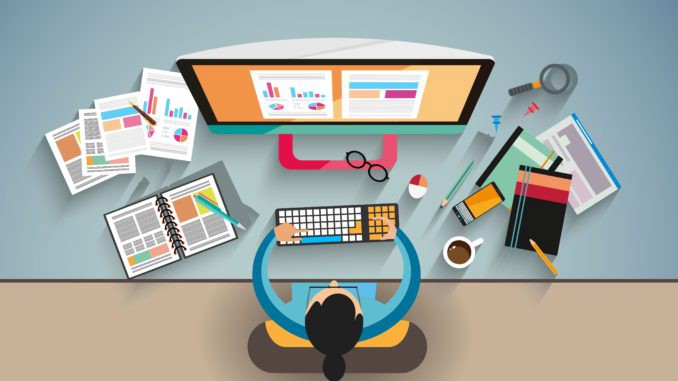How to Successfully Integrate Visual Appeals and Functionality in Website Design
When designing a site, you need to strike a balance between visual appeals and performance. It's not practically looking great; your style ought to likewise serve a purpose and overview users successfully. By concentrating on simpleness and intuitive navigating, you can create an appealing experience. But what components genuinely improve use while keeping aesthetic allure? Allow's discover the key concepts that can bring about an unified mix of elegance and function.
Comprehending the Value of Aesthetics and Functionality
When you develop a web site, comprehending the balance between looks and performance is crucial for developing a reliable customer experience. An aesthetically appealing website grabs attention, yet it's the performance that keeps customers engaged. If your site looks wonderful but is challenging to browse, visitors will swiftly weary and leave.Consider your target audience and what attracts them in. You want to produce a design that shows your brand name while making sure ease of usage. Structured designs, intuitive navigating, and clear phone calls to action can improve both aesthetics and functionality.

Principles of Reliable Website Design
To develop an effective website design, you need to stick to several vital principles that enhance both individual experience and visual appeal. Initially, prioritize simpleness; a clean format helps customers navigate conveniently. Utilize a regular color system and typography to maintain coherence across your website. This cultivates familiarity and trust.Next, assure your layout is receptive. Users gain access to sites on numerous gadgets, so your layout ought to adjust seamlessly. Pay focus to visual power structure; highlight crucial components with color, size, or positioning to lead individuals' focus.Finally, integrate adequate white space. It avoids mess and makes content more digestible. Bear in mind, efficient internet design balances aesthetics and functionality, so every layout choice need to offer a function. By adhering to these principles, you'll create a site that's not just aesthetically attractive but additionally user-friendly, inevitably maintaining site visitors engaged and motivating them to return.
Prioritizing Individual Experience
When focusing on customer experience, you'll wish to begin by recognizing what your individuals truly need. Streamlining navigation style can make a significant difference in just how easily they locate what they're looking for. Also, boosting aesthetic hierarchy helps direct their focus to the most essential aspects on your site.
Understanding Customer Needs
Comprehending individual requirements is necessary for creating an appealing web experience that keeps visitors returning. To achieve this, you have to recognize the goals and preferences of your target market. Beginning by carrying out customer research, like interviews or studies, to gather understandings on what customers worth most. When interacting with similar internet sites, pay focus to their pain factors and difficulties. This info allows you to tailor your design, guaranteeing capability aligns with individual assumptions. Furthermore, take into consideration creating user identities that stand for various sections of your target market, assisting you picture their needs during the design procedure. When you focus on understanding individual demands, you produce a web site that not only looks excellent but also provides a smooth, pleasurable experience that fosters loyalty.
Simplifying Navigating Design

Enhancing Visual Hierarchy
A solid aesthetic pecking order is vital in guiding users through your internet site and guaranteeing they involve with key content. To achieve this, use spacing, dimension, and color strategically. Make important components like headings larger and bolder than body text, attracting interest instantly. Use contrasting shades to highlight telephone calls to action, urging clicks. Furthermore, utilize adequate white space to separate sections, making material digestible and inviting.Consider the flow of information; organize aspects realistically, leading individuals' eyes from one indicate the following. Use visual hints, like lines or arrowheads, to guide focus. By prioritizing aesthetic hierarchy, you improve user experience and increase the probability of conversions, guaranteeing your site is both aesthetically pleasing and functionally efficient.
Color Concept and Its Effect on Usability
While selecting the right colors for your site may look like a small detail, it substantially affects usability and individual experience. Color influences exactly how users regard details and can prevent or improve navigation. As an example, contrasting colors can assist essential aspects stick out, making it much easier for visitors to locate what they need.Additionally, consider the psychology of shades: blue frequently motivates trust fund, while red develops necessity. Recognizing your target market can assist your color options, guaranteeing they resonate well.Moreover, regular color design help build brand identity, making your website extra memorable. Be careful-- also numerous shades can overwhelm customers. Stay with a minimal palette that complements your material and maintains clarity.Incorporating ease of access is likewise essential; verify your color combinations get along for those with visual impairments. By attentively using shade concept, you'll boost functionality and produce a much more interesting individual experience.
Typography: Balancing Design and Readability
Shade choices established the stage for your site, but typography plays a go to my blog similarly crucial role in enhancing user experience. You desire your message to communicate plainly while additionally mirroring your brand name's individuality. Start by choosing font styles that are not just eye-catching yet additionally understandable. Sans-serif typefaces frequently function well for digital displays, as they're simpler to read at various sizes.Maintain a hierarchy by making use of various typeface dimensions and weights; this overviews users via your content effortlessly. Take into consideration line spacing and letter spacing; too limited can frustrate viewers, while as well loosened can interrupt the flow. Limit your font style options to 2 or 3 to maintain the style cohesive.Finally, constantly evaluate your typography throughout various gadgets and internet browsers. What looks great on one display might out another. Stabilizing design with readability warranties that your message reverberates, keeping your audience engaged and notified.
Responsive Layout: Making Aesthetic Appeals Work on All Instruments
To guarantee your site looks excellent on any type of device, you'll need to embrace receptive design concepts. This strategy assurances your website adapts to various display sizes, providing an ideal individual experience. Beginning by making use of fluid grids and adaptable images that scale seamlessly. Rather of fixed dimensions, decide for percentages and family member devices, allowing your format to adjust dynamically.Next, apply media inquiries in your CSS. These let you use various styles based on device characteristics, like screen width. By doing this, you can preserve visual allure while assuring functionality.Don' t neglect concerning touch targets; make particular switches and links are very easy to touch on smaller screens. Focus on crucial web content, so customers can conveniently navigate your site regardless of their tool. By concentrating on these aspects, you'll produce an appealing, visually appealing experience that fulfills the demands of all users, whether they're on a desktop, smart device, or tablet computer .
Conducting Functionality Screening for Constant Enhancement
To enhance your website design, you require to establish clear use goals that align with customer requirements. By conducting individual examinations, you can collect important responses on exactly how genuine people engage with your website. Assessing these results will certainly aid you make educated improvements and develop an extra efficient customer experience.
Specifying Usability Goals
While visual appeals can attract users in, defining usability goals is vital for guaranteeing their experience stays rewarding and seamless. Start by identifying what you desire individuals to achieve on your website (website design london Ontario). Consider their tasks, habits, and needs. Are they seeking details, purchasing, or signing up for an e-newsletter? Establish clear criteria to measure success, like job completion rates or time on job. Focus on intuitive navigation, accessible web content, and receptive style to boost use. Consistently revisit these objectives as customer assumptions evolve. By specifying use objectives, you develop a framework for evaluating and enhancing your site's efficiency. This emphasis on usability not just increases user contentment however additionally strengthens the total performance of your design
Carrying Out User Examinations
Carrying out customer tests is important for fine-tuning your web site and ensuring it meets your target market's requirements. Beginning by determining your target customers and creating an examination strategy that describes your objectives. Utilize a mix of quantitative and qualitative approaches, such as surveys, interviews, and task-based monitorings, to collect thorough comments. Welcome individuals to navigate your website while you observe their interactions and keep in mind any type of difficulties they experience. Urge open discussion to record their ideas and feelings about the layout and functionality. Keep sessions brief and focused, ensuring you cover vital areas without overwhelming individuals. Ultimately, make sure to record all searchings for, as this info will certainly be important for making informed layout choices that improve both looks and use.
Examining Test Outcomes
How can you successfully evaluate the outcomes of your functionality tests to drive constant improvement? Beginning by categorizing comments into common motifs. Search for patterns in user behavior that highlight pain points or areas for enhancement. Usage measurable website link information, like job conclusion prices and time on job, to determine usability fairly. Do not forget to consider qualitative understandings from customer remarks; they often reveal underlying issues that numbers can not show. Focus on the most impactful findings and develop actionable things for your layout team. Remember, it's regarding iterating-- execute changes, after that test once again. This cycle of testing, evaluating, and refining assists you balance appearances and capability, ensuring your website satisfies user requirements efficiently while keeping aesthetic appeal.
Regularly Asked Inquiries
Just how Do I Choose the Right Shade Palette for My Web site?
To pick the right shade combination for your internet site, consider your brand's character, target market, and emotional influence (website design london Ontario). Usage shade psychology, develop harmony, and guarantee click here to read readability. Test mixes to see what reverberates ideal with visitors
What Devices Can Assist With Web Style Looks and Capability?
You can make use of devices like Adobe XD, Figma, and Lay out to improve your web style's looks and capability. These systems use user-friendly interfaces, cooperation functions, and pre-made design templates to enhance your imaginative procedure and enhance your styles.
Exactly How Can I Include Animations Without Jeopardizing Functionality?
To integrate animations without compromising performance, prioritize refined results that enhance customer experience. Usage CSS computer animations for smoother communications, guarantee fast lots times, and test on numerous gadgets to keep efficiency while including visual allure.
What Are Typical Errors to Prevent in Website Design Appearances?
When designing, avoid chaotic formats, poor shade options, and irregular fonts. Do not neglect mobile responsiveness, as it can alienate customers. Confirm your style lines up with your brand, creating a smooth experience that engages site visitors efficiently.
How Usually Should I Update My Website's Design for Optimal Appearances?
You should upgrade your website's style every 1-2 years to keep up with patterns and preserve excellent looks. Regularly restoring visuals assists involve guarantees and visitors your site continues to be attractive and easy to use. When you create a site, comprehending the balance in between looks and capability is necessary for producing an efficient customer experience. To create a reliable web style, you require to adhere to several vital concepts that enhance both user experience and visual allure. Customers gain access to web sites on various tools, so your style needs to adjust seamlessly. When focusing on customer experience, you'll desire to start by recognizing what your customers really need. Begin by performing customer study, like studies or interviews, to gather understandings on what individuals value most.